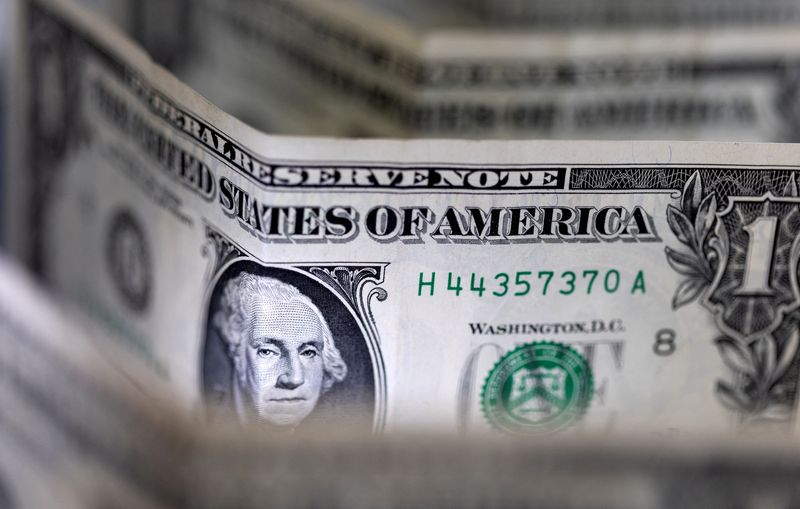By Harry Robertson
LONDON (Reuters) - If investors agree on one thing this year, it's that the dollar is going to fall. That's made the greenback's 2% bounce over the last month particularly confusing.
U.S. inflation is cooling and the Federal Reserve may pause its interest rate hikes next month. So the dollar should be on the way down, right?
Analysts say a number of factors are probably at play. One is that a range of worries - about the U.S. debt ceiling negotiations, the health of banks, and the global economy's outlook - are burnishing the dollar's safe-haven credentials.
Meanwhile, there are some signs that the Fed may have to raise rates again, and that more technical factors to do with investor positioning are involved.
DEBT CEILING FEARS
The dollar index - which measures the U.S. currency against six others - has risen roughly 2% since the middle of April to around 103, although it's still down around 10% from last September's 20-year high of 114.78.
The go-to explanation of currency strategists right now is the debt-ceiling debacle is boosting the dollar.
Democrats and Republicans are inching closer to reaching an agreement on raising the $31.4 trillion borrowing limit. But the threat of a potentially catastrophic U.S. debt default lingers, at a time when many banks look weak.
When markets are faced with worries like that, they often buy less risky assets such as bonds, gold, and dollars.
"The recent USD strength is largely driven by increased safe-haven demand in view of 'unknown unknowns'," said Esther Reichelt, currency strategist at Commerzbank (ETR:CBKG).
"How severe are vulnerabilities in U.S. regional banks and what might be the fallout of an escalation in the U.S. debt ceiling conflict?"
Some worrying signs about global economic growth may also be contributing to safe-haven buying. Data out of China this week showed that its economy underperformed in April.
THE FED MAY NOT BE FINISHED
Alvin Tan, head of Asia FX strategy at RBC Capital Markets, doubts the safe-haven argument.
If investors were worried, stocks would be falling, he said. In reality the S&P 500 index has been flat since the middle of April and is up more than 8% this year.
Tan said concerns that the Fed has not yet slain inflation are part of the story. A University of Michigan survey released last week showed consumer inflation expectations rose to a five-year high of 3.2% in May, lifting bond yields and the dollar.
Traders currently expect the U.S. central bank to cut interest rates sharply later this year as a recession takes hold, yet Tan is skeptical.
"We think there's a chance that U.S. interest rates could grind higher," he said. "We remain unconvinced by the argument that the dollar is on a steady decline from here."
NATURAL REBOUND
For other analysts, so-called technical factors are at play.
Investors have mounted big bets against the dollar. The net short bets of hedge funds and other speculators amounted to $14.56 billion last week, data from the Commodity Futures Trading Commission shows, the biggest such position since mid-2021.
Counter-intuitively, that positioning can help drive rallies. If the dollar rises slightly, some traders may be forced to close out their short positions by buying the dollar, which then boosts its value.

"The dollar is very, very oversold," said Chester Ntonifor, FX strategist at BCA Research.
"That's one technical indicator. But a simple technical indicator is that it is very atypical for you to have a straight-line decline in the dollar."